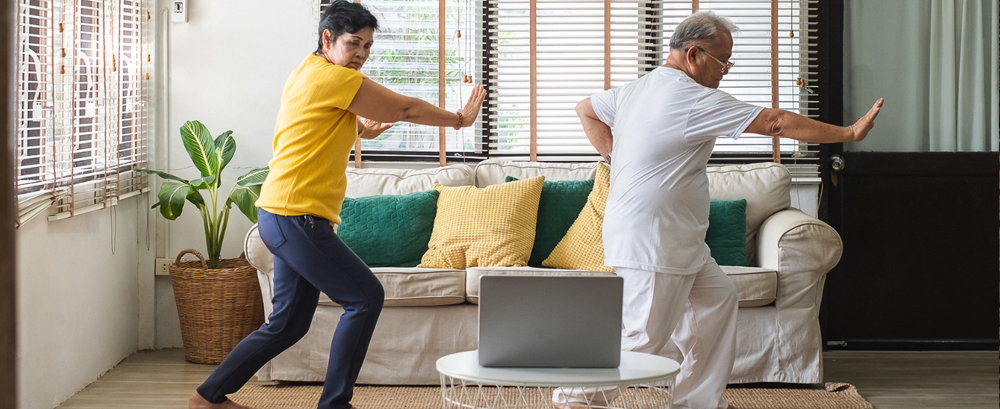
Tai chi is a low-impact exercise that can be practiced inside or outdoors. It requires no equipment, and you don’t have to be in great shape to do it. Best of all, the slow and steady qualities of tai chi make it a great way to be in the moment and reduce stress. Before starting any new fitness routine, it’s a good idea to consult with your Kinwell clinician. Reach out via MyChart or call 833-411-5469 to schedule an appointment.
According to the Tai Chi for Health Institute, tai chi was originally developed as a martial art and incorporates ideas from Chinese medicine and philosophy. It’s often referred to as “meditation in motion.” The Chinese emphasize the meditative and spiritual aspects of the practice. You may have seen older folks practicing tai chi in a park or senior center, but it’s a great form of exercise for people of all ages and abilities and can even be practiced while seated.
The National Institutes of Health (NIH) notes that more than 500 clinical trials were published through 2016 on the health benefits of tai chi. They report “excellent evidence of benefit for improving balance and aerobic capacity in those with poor fitness.” Tai chi appears to be an ideal form of exercise for those with many different health conditions, and even for people recovering from a heart attack or stroke. For older adults, evidence suggests that tai chi is beneficial for preventing falls and improving cognitive ability.
The Journal of the American Medical Association reports that regular tai chi practice can improve sleep quality and alleviate insomnia, depression, and anxiety. A National Institute of Health study credits tai chi with reducing blood pressure and improving immune function. The Harvard Medical School writes that tai chi “could be the perfect activity for the rest of your life.”
David Goodell, a Seattle teacher of tai chi notes that “tai chi is a healing path—mentally, spiritually, and physically. The practice of tai chi helps us restore the balance and harmony between body and mind.” Goodell says all tai chi instruction should include these principles:
- Relax. It’s the opposite of tensing yourself up for an encounter.
- Establish a comfortable connection with the ground. Let your feet relax and allow your weight to spread evenly across the bottoms of your feet.
- Imagine that you’re suspended from above. Picture a string attached to the top of your head that aligns your spine and your whole body.
- Relax your breathing. When you breathe in, fill your lungs from the bottom to the top.
- Focus your attention on your center of gravity. The Chinese call this the “tan tian,” (pronounced “dan tee-en”). As you move through the tai chi postures, your movements should originate from this center of gravity.
If you’d like to read more about tai chi, consider the book, The Harvard Medical School Guide to Tai Chi: 12 Weeks to a Healthy Body, Strong Heart, and Sharp Mind.


